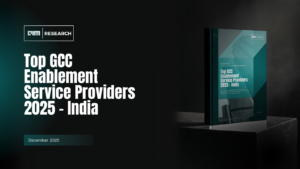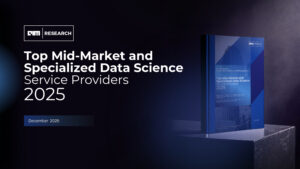AI’s potential to reshape policy-making can lead us towards decisions that are faster, smarter, and more influential. Yet, our forward stride must be in sync with regulatory measures, guaranteeing that our AI-powered future stands firmly on the pillars of equity, justice and accountability. – AmitKumar Shrivastava
In a world increasingly shaped by digital transformation, a compelling question beckons: How can the power of artificial intelligence (AI) enhance public policy? How can governments harness the benefits while tackling the potential challenges of this emerging technology? With its still unfolding capabilities, the rapidly escalating integration of AI in government services and operations offers some fascinating insights.
While AI is unlikely to replace policymakers, it can facilitate more informed, quicker, and more rigorous decisions. The potential of AI stretches to forging more responsive and inclusive governments, thereby meeting the needs of all citizens. With the escalating adoption of AI, these lofty public policy objectives become increasingly attainable.
Policymaking is often a complex, lengthy process fraught with political friction and excessive bureaucracy. These challenges are further complicated by the tedious process of validating policy effectiveness using data. Furthermore, the tendency to focus on narrow areas like health or education instead of broader socioeconomic issues often leads to inefficiency and repetition.
In our fast-paced world, the expectation is for policymakers to make consequential decisions underpinned by comprehensive knowledge, relevant data, and the ability to decipher complex information. The advent of AI offers an opportunity to augment the policymaking process. AI brings advanced analytical tools, forecasting capabilities, evidence-based program development, and real-time monitoring and evaluation.
When shaping policies, decision-makers navigate a challenging landscape where data-driven decisions are critical. However, the potential for misinterpreted data, communication errors, and fragmented evidence can muddle this process. The integration of AI can help surmount these hurdles, providing policymakers with enhanced capabilities.
These capabilities include:
- Pattern Detection: AI’s ability to analyze vast datasets swiftly enables the identification of recurring patterns. This capability aids policymakers in devising optimized solutions and transparent, understandable policies.
- Forecasting Policy Outcomes: Forecasting is crucial in evidence-based policymaking. AI provides reliable, AI-driven forecasts that offer valuable insights into potential policy outcomes, contributing to informed decision-making.
- Policy Evaluation: The task of evaluating the effectiveness and impact of policies involves tracking their influence on the target population. This necessitates collecting and analyzing extensive data, a process AI can simplify, offering comprehensive insights for evaluating policy outcomes.
Concrete examples of AI’s effective integration in policymaking can be found in the public health sector. For instance, the response to the COVID-19 pandemic in India involved the deployment of the AI-based Aarogya Setu app. This app used AI-driven algorithms, Bluetooth and GPS technologies for contact tracing and disseminated important health updates. The use of AI in the application not only increased the efficiency of public health services but also informed policy decisions, such as the identification and management of COVID-19 hotspots. Yet, it also underscores the importance of addressing data privacy concerns when integrating AI in policymaking, emphasizing the need for a balanced approach between AI utility and the protection of individual rights.
The influence of AI on public policy adoption within corporations has recently drawn significant attention. However, this has also raised new challenges for regulatory frameworks. For instance, the European Union’s General Data Protection Regulation (GDPR) introduced provisions addressing automated decision-making, transparency, and accountability. In response, corporations like joint tech corporations have set up dedicated AI ethics boards or advisory committees.
Monitoring AI trends can facilitate policy piloting, where trends can be encouraged or penalized as needed. For instance, a major e-commerce firm underwent a similar procedure before launching programs allowing users to text and visually search through millions of products in 11 languages. They are now trialling conversational bots, showcasing features like speech-to-text and text-to-speech capabilities, user intent detection, language translation, and deep learning for model development.
According to a PwC report, AI has the potential to add $15.7 trillion to the global economy by 2030. To tap into this potential, establishing industry standards to ensure safety, fairness, and reliability is significantly dependent on the performance of AI systems. For instance, AI vision algorithms in self-driving cars must consistently recognize hazards like a child darting onto the road, irrespective of weather conditions. Failing to meet such standards can undermine public trust in AI, potentially curtailing the economic benefits associated with its widespread adoption.
AI presents unique opportunities to revolutionize policymaking. Its analytical capabilities, predictive powers, and real-time monitoring can facilitate evidence-based policy development, efficient implementation, and timely evaluation. Policymakers must adapt their strategies and embrace AI to fully harness its potential in moulding the future of policymaking. With responsible and strategic integration, AI can catalyze improved governance and societal progress. Nevertheless, it is essential to undertake this integration with a comprehensive understanding of AI’s limitations and potential inaccuracies, especially in high-stakes policy contexts, to prevent overreliance on its results.
However, the rise of AI also brings potential concerns regarding ethics and job displacement. While AI can streamline processes and provide efficient solutions, ensuring these advancements are not at the cost of human jobs is crucial. Legislators and policymakers should work towards policies that facilitate a balance between AI integration and job security.
Moreover, the ethical implications of AI in policymaking need serious consideration. The question of algorithmic fairness and bias, data privacy, and the potential for misuse of AI are serious concerns. These factors make it crucial for legislators to stay up-to-date with AI advancements, understand their implications, and create appropriate ethical frameworks.
AI’s pervasive presence in our lives, from social media platforms like Instagram and YouTube to novel applications such as facial recognition technology in airports, hotels, police departments, and shopping malls, highlights the need for stringent oversight. Recent wrongful arrests due to facial recognition errors underscore the urgent need for government intervention.
Public investment in AI is imperative as corporations alone cannot mitigate potential harm caused by AI. Governments worldwide are stepping up their investments in AI and formulating strategies for its implementation and promotion. India’s flagship digital project, Digital India, received a budget boost to $477 million in 2020 to advance AI, IoT, big data, cybersecurity, machine learning, and robotics, promoting e-governance, e-banking, e-education, and e-health.
Simultaneously, the European Parliament has adopted the EU AI Act, imposing restrictions on generative AI technologies like ChatGPT. Creators of such AI now need to submit their systems for evaluation before commercialization. The Parliament has also banned contentious “social scoring” and real-time biometric identification systems.
Considering these developments, there is a pressing need for more to be done. Legislators must grasp the typical functioning of AI systems to identify anomalies better and enforce regulations effectively. This is not a one-off task. As the sector grows more complex and algorithms evolve regularly, legislators must scrutinize different algorithms for potential violations.
This article is written by a member of the AIM Leaders Council. AIM Leaders Council is an invitation-only forum of senior executives in the Data Science and Analytics industry. To check if you are eligible for a membership, please fill out the form here.
This article is written by Amitkumar Shrivastava, Head, Artificial Intelligence Unit, India at Fujitsu, Fujitsu Fellow & Global Fujitsu Distinguished Engineer. Amit has over a decade of experience and has been dedicated to nurturing India’s AI ecosystem as an industry leader. His commitment to technology awareness and mentorship has earned him accolades, and he actively engages with professionals and students at all levels.







